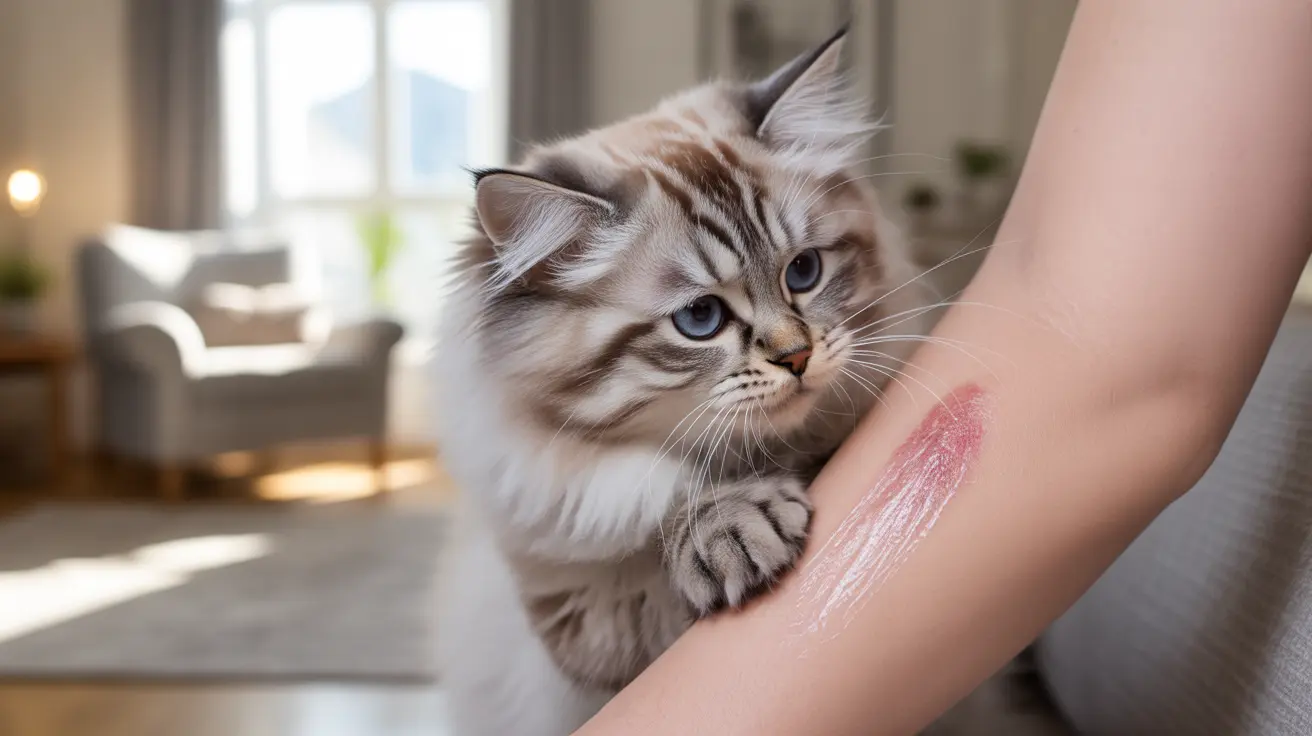Understanding Rabies Transmission Through Cat Scratches
The rabies virus primarily spreads through saliva-to-blood contact, most commonly through animal bites. However, scratches present a secondary transmission route when contaminated with infected saliva. The virus can enter the body through any break in the skin, including fresh scratch wounds.
The CDC confirms that while scratch transmission is uncommon, it's a recognized risk factor, especially in areas with high rabies prevalence. The virus travels through the nervous system to reach the brain, making immediate treatment crucial for any potential exposure.
Risk Factors and Prevention
Vaccination Status
The vaccination status of both cats and humans plays a crucial role in prevention. Keeping pets current on their rabies vaccines provides essential protection. For humans, pre-exposure vaccination may be recommended for those at high risk, such as veterinarians or animal control workers.
Environmental Factors
The risk level varies significantly based on geographic location and exposure to unvaccinated or feral cats. Urban areas with large stray cat populations and regions with endemic rabies present higher risks for potential exposure.
Immediate Actions After a Cat Scratch
If you're scratched by a cat, especially one with unknown vaccination status, take these immediate steps:
- Thoroughly wash the wound with soap and water for at least 15 minutes
- Apply an antiseptic solution if available
- Seek medical attention promptly, especially if the cat showed unusual behavior
- Document the incident and, if possible, safely contain the cat for observation
- Contact local animal control for guidance
Signs of Rabies in Cats
Recognizing potential rabies symptoms in cats helps identify risks early. Watch for:
- Sudden behavioral changes
- Increased aggression or unusual friendliness
- Difficulty swallowing or excessive drooling
- Paralysis, particularly starting in the hindquarters
- Fear of water
- Lethargy or restlessness
Frequently Asked Questions
Can you get rabies from a scratch by a cat that has rabies?
Yes, while rare, rabies transmission through cat scratches is possible if the scratch is contaminated with infected saliva, such as when a rabid cat licks its paws before scratching.
How does rabies virus transmit through a cat scratch compared to a bite?
Rabies transmission through scratches requires infected saliva to enter the wound, making it less efficient than direct bite transmission. However, any break in the skin contaminated with infected saliva poses a risk.
What are the early signs of rabies in cats that pet owners should watch for?
Early signs include behavioral changes, increased aggression or unusual friendliness, difficulty swallowing, excessive drooling, and progressive paralysis starting in the hindquarters.
What should I do immediately if I get scratched by a cat that might have rabies?
Wash the wound thoroughly with soap and water for at least 15 minutes, apply antiseptic if available, and seek immediate medical attention. Document the incident and report it to local health authorities.
Is rabies vaccination for cats effective in preventing infection from scratches?
Yes, keeping cats current on rabies vaccination is highly effective in preventing infection and transmission through both bites and scratches. Regular vaccination is essential for all cats, including indoor-only pets.
Conclusion
While getting rabies from a cat scratch is possible but rare, taking proper precautions and knowing how to respond to potential exposure is crucial. Maintaining current vaccinations for pets and seeking prompt medical attention after any suspicious scratch ensures the best possible protection against this serious disease.






